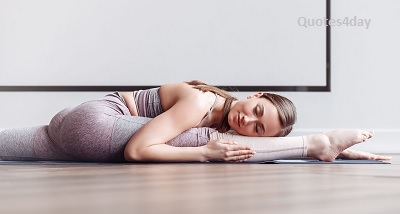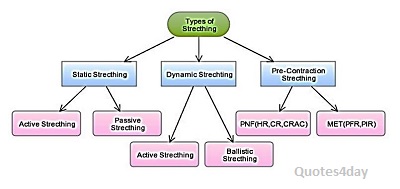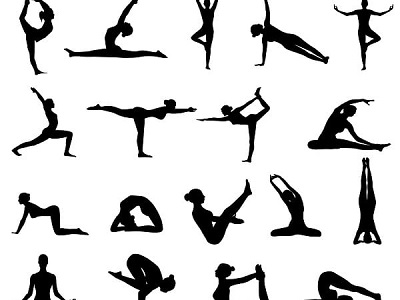Even a little physical activity has been proven to improve mood, reduce stress levels, and improve overall well-being. Stretching is a great option for those who are looking for options for training with low intensity at home.
Stretching (translated from English. “stretching”) is one of the varieties of fitness that develops the flexibility of the body by stretching the ligaments and muscles. How much training can be useful and what exercises to try?

Benefits of incorporating stretching into your routine
Stretching exercises do not train muscles or burn calories, however, it is recommended to add them to your training plan. What gives us stretching:
- It activates blood circulation and increases the flow of nutrients to the ligaments and muscles.
- Accelerates muscle recovery, and relieves muscle tension. Therefore, stretching exercises are recommended to be performed as part of a hitch after the main workout.
- Increases muscle elasticity, and increases range of motion.
- By increasing the elasticity of muscle fibers, the risk of injury is reduced.
- Increases joint mobility.
Is it worth developing flexibility at all? Yes, because during training certain muscle groups are involved, while some can simply “rest”. Because of this, a particular muscle group may lose its elasticity, stiffness of movements appears, and the risk of injury increases.
And good flexibility is the smoothness of movement, beautiful gait, posture, and many other benefits. Including stress reduction, which is so important for all of us lately. During stretching, nothing distracts you from your attention to your body: you focus on breathing and listening to inner sensations.
Types of Stretching
Basic – simple home exercises for beginners that help keep muscles and ligaments flexible, good as a self-workout or cool-down / warm-up. If necessary, prepare the body for other, more complex types of stretching.
Aerostretching – exercises in the air using belts or cloths attached to the ceiling. Such workouts put a significant strain on the muscles and are carried out under the supervision of a trainer.
Stretching exercises themselves can be:
- Soft, during which the muscles are stretched to their normal length, the duration of the exercises is about 30 seconds;
- Deep, stretching the muscles to a new length, exercises are performed for 1-5 minutes.
According to the method of performing the exercise, there are:
- Static – stretching, is aimed at relaxing muscles, and working out tendons and joints.
- Dynamic – a set of movements in which the muscles alternately stretch and relax.
- Isometric – stretching occurs in 4 stages: tension, relaxation, stretching, and fixation.
- Ballistic – stretching with sharp and dynamic exercises.

The first two types – static and dynamic exercises, are quite suitable for beginners and self-fulfillment (if there are no contraindications). But isometric and ballistic training is best done in the gym under the supervision of a trainer.
What rules to follow during training
As in any sport, you need to warm up your muscles before stretching. It can be running in place, squats, cycling, etc. A few more rules:
- Avoid overexertion, and maintain balance and calmness.
- Breathe correctly – deeply and evenly, with each breath relaxing the muscles.
- Work in a complex, do not get hung up on several muscles.
- Keep your back straight while exercising.
- Follow the correct technique for each exercise.
Are there any contraindications
Like other sports, stretching has some contraindications. These classes are not suitable for those who have:
- Problems with the spine, ligaments, and joints;
- Thrombosis;
- Hernia;
- Arthritis, osteoporosis;
- Diseases of the heart or blood vessels.
Stretching exercises
Want to try stretching? Start with these simple exercises (adjust the number of repetitions yourself depending on your level of physical fitness):
Visit: How to Sit on a Twine: Exercises and Recommendations
- Starting position – sitting on the rug, feet are divorced, and the buttocks are on the floor. Gently and slowly spread your feet to the sides. Let’s keep our back!
- IP is similar, but the heels are under the buttocks. Lean forward so that your shoulders and head are as close to the floor as possible. Stretch your arms forward, back straight. We are waiting for a few seconds – to return to the IP.
- Do a side lunge, and try to get as close to the floor as possible. With a few springy movements – transferring the body to the other leg – “spring” – we return to the IP.
- Standing, we make a deep lunge forward on the left/right leg. We hold for a while and return to the IP. We repeat on the second leg.
- Sitting on the floor, straight legs together. Grab your foot with your hand and pull it up to your face as close as possible. The back is straight. Hold the position for a few seconds and return to the starting position.
IP is similar. Slow tilt – hold on – return to the starting position. - “Butterfly”: sitting on the floor, bend your knees and connect your feet. Spread your knees to the sides as much as possible and perform inclinations.
- Sitting on the floor, legs forward. Bend the right leg at the knee and bring it behind the left, right foot on the floor. Perform tilts to the left leg, stopping in position for a few seconds, and return to the PI. Change your legs and repeat the exercise.

To relax the muscles and it is easier to stretch, each time increasing the load, proper breathing will help. During the exercises, continue to breathe without holding your breath.
How do you feel about stretching? Are you doing similar exercises or are you just thinking about starting? Write in the comments.
FAQs
Q: How long should I hold each stretch?
A: The ideal duration for holding a stretch is around 20 to 30 seconds. This allows enough time for the muscles to relax and lengthen.
Q: Should I stretch before or after a workout?
A: It is recommended to perform dynamic stretching as a warm-up before a workout to prepare your muscles. Static stretching is more effective when done after a workout to cool down and improve flexibility.
Q: Can stretching help prevent injuries?
A: Yes, regular stretching can help reduce the risk of injuries by improving flexibility, increasing joint range of motion, and enhancing muscle elasticity.
Q: Is stretching necessary for non-athletes or people who don’t exercise regularly?
A: Stretching is beneficial for everyone, regardless of their fitness level or activity level. It helps maintain flexibility, improves posture, and reduces muscle tension.
Q: Can stretching improve my athletic performance?
A: Yes, stretching can improve athletic performance by increasing muscle efficiency, promoting better muscle activation, and enhancing the overall range of motion.


